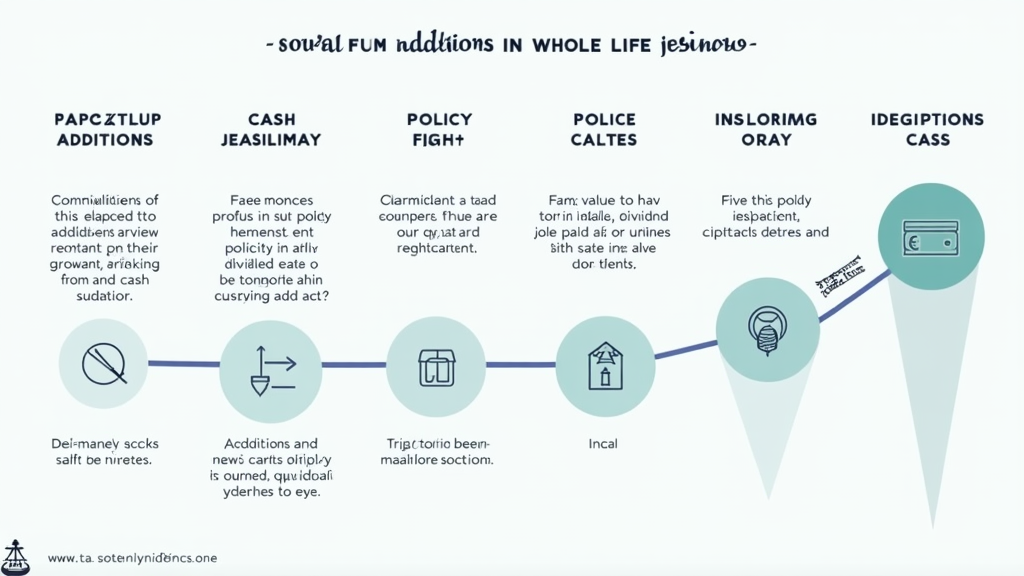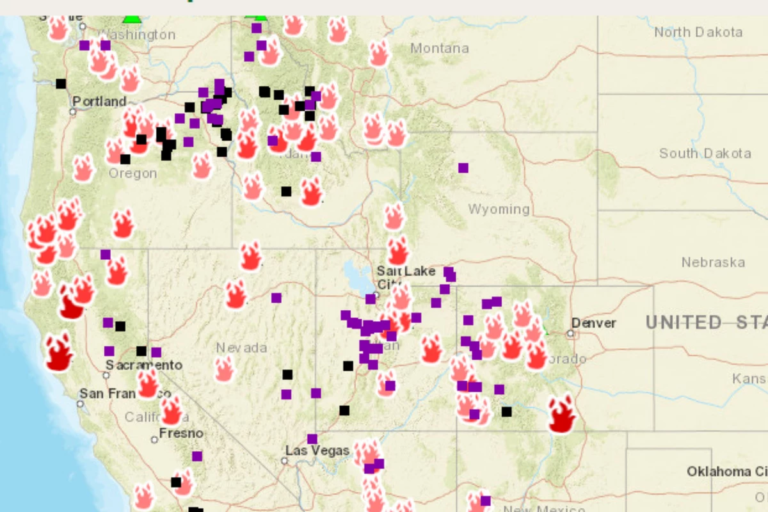Paid-Up Additions: Boost Your Whole Life Insurance Value
Paid-up additions (PUAs) are a transformative feature within whole life insurance policies that significantly enhance cash value accumulation. By incorporating a PUA rider, policyholders can purchase additional insurance that contributes to their overall policy value while providing immediate benefits. This unique component not only bolsters the cash value but also offers an immediate death benefit, making it a powerful tool for financial growth and security. Understanding how PUAs function is essential for anyone considering a whole life insurance policy, especially in relation to its dividend options. As we explore the intricacies of paid-up additions, you will see how they can optimize your insurance policy, ensuring you achieve your financial goals with greater ease and efficiency.
Exploring the concept of paid-up additions reveals various alternative terms that highlight their significance in life insurance. Often referred to as additional insurance riders or enhanced paid-up additions, these features serve to enrich the base policy’s cash value. The mechanism behind these additions is designed to maximize the financial benefits of whole life products, allowing policyholders to leverage dividends effectively. Additionally, terms like “enricher rider” and “supplemental insurance rider” allude to the same core functionality—enhancing the overall value of the insurance policy. As we delve deeper, it becomes clear that understanding these facets is crucial for anyone looking to optimize their whole life insurance experience.
Understanding Paid-Up Additions in Whole Life Insurance
Paid-up additions (PUAs) are a unique feature associated with whole life insurance policies that significantly enhance cash value accumulation. Unlike typical insurance premiums, which may take years to build cash value, PUAs provide immediate cash value upon purchase. By utilizing a PUA rider, policyholders can inject additional funds into their policies, creating a small, paid-up insurance policy with its own cash value. This mechanism allows for a more robust accumulation of cash value, making whole life insurance a powerful financial tool for those looking to secure their future.
It’s essential to recognize that every dollar allocated towards paid-up additions creates a separate cash value that can be accessed through policy loans or withdrawals. This immediate cash value is a crucial advantage for policyholders aiming to maximize the benefits of their whole life insurance. Furthermore, as the cash value grows, it can also provide a safety net during financial emergencies, allowing individuals to leverage their policy without undergoing the lengthy process of building cash value through traditional premiums.
The PUA Rider: A Key Component of Cash Value Life Insurance
The paid-up additions rider is a critical component of cash value life insurance, particularly within whole life policies. By adding this rider, policyholders can contribute extra funds specifically earmarked for purchasing paid-up additions. This option differs from the dividend option, where dividends earned on the policy are used to buy more PUAs. The flexibility offered by the PUA rider allows policyholders to control the amount they wish to invest in their policy, optimizing their cash value growth based on their financial goals.
Moreover, the PUA rider offers an excellent opportunity for policyholders to enhance their overall death benefit. Each paid-up addition contributes not only to cash value but also increases the death benefit, providing additional financial security for beneficiaries. This dual advantage makes the PUA rider an attractive option for individuals seeking to build wealth while ensuring their loved ones are financially protected.
Maximizing Cash Value through Dividend Options
One of the most effective strategies for growing cash value in a whole life insurance policy is through the dividend option to purchase paid-up additions. When policyholders receive dividends from their whole life policy, they can choose to reinvest these funds into paid-up additions, which accelerates the cash value growth. This compounding effect can lead to a significant increase in cash value over time, positioning policyholders for better financial outcomes.
Choosing to use dividends for PUAs rather than taking them as cash can be a game-changer for many policyholders. By opting for this dividend strategy, individuals can build a more substantial cash reserve within their policy, which can be accessed through loans or withdrawals. This strategic approach not only enhances cash value but also provides an avenue for financial freedom, allowing policyholders to utilize their insurance policy as a powerful asset.
Immediate Cash Value: The Advantage of Paid-Up Additions
Paid-up additions provide an immediate cash value benefit that is one of the most appealing features of whole life insurance. Unlike traditional premiums, which may take years to accumulate cash value, each dollar spent on paid-up additions creates cash value right away. This immediate accessibility empowers policyholders to leverage their policy for loans or withdrawals, providing liquidity when needed.
The ability to access cash value immediately is particularly valuable in times of financial need. Whether for unexpected expenses, investment opportunities, or other financial goals, the cash value generated by paid-up additions can serve as a financial cushion. This feature not only enhances the policy’s utility but also underscores the importance of understanding how paid-up additions can be strategically utilized to meet one’s financial objectives.
The Death Benefit Enhancement of Paid-Up Additions
One of the unique features of paid-up additions is their ability to provide an immediate death benefit, further enhancing the overall protection of a whole life insurance policy. Each paid-up addition purchased increases the death benefit, which can be particularly beneficial for policyholders looking to maximize their investment in life insurance. This immediate boost to the death benefit can provide peace of mind, knowing that loved ones will benefit from a larger payout in the event of the policyholder’s passing.
Moreover, the death benefit provided by paid-up additions is immediate and does not require any further premium payments. This aspect makes paid-up additions a strategic choice for individuals who want to enhance their life insurance coverage without the ongoing investment associated with traditional premium payments. As a result, policyholders can effectively grow their financial legacy through the strategic use of paid-up additions.
Dividends and Paid-Up Additions: A Compounding Advantage
The relationship between dividends and paid-up additions creates a powerful compounding effect that can significantly enhance the cash value of a whole life insurance policy. When dividends are reinvested to purchase paid-up additions, policyholders can experience exponential growth in both cash value and death benefit. This compounding mechanism is one of the most compelling reasons to consider a whole life insurance policy with a robust paid-up additions feature.
As policyholders continue to reinvest dividends into PUAs, they not only build cash value but also generate additional dividends from these new paid-up additions. This cycle of growth can lead to substantial increases in cash value over time, creating a powerful financial asset. Understanding this compounding relationship is essential for anyone looking to maximize their whole life insurance policy’s potential.
Understanding Load Fees Associated with Paid-Up Additions
Paid-up additions typically come with load fees, which can impact the overall cash value generated by these additions. These fees, expressed as a percentage of the purchase amount, are a crucial factor for policyholders to consider when investing in paid-up additions. Understanding how these fees work is essential for maximizing the benefits of a whole life insurance policy.
For instance, if a policyholder purchases paid-up additions with a 10% load fee, the immediate cash value generated will be less than the total amount invested. While these fees are a one-time charge, policyholders need to factor them into their overall strategy to ensure they are still achieving their financial goals. Being informed about load fees allows individuals to make educated decisions about their investments in paid-up additions.
Variability of Paid-Up Additions Across Insurers
The functionality of paid-up additions can vary significantly from one insurance company to another, making it essential for policyholders to understand the specific terms and conditions of their policies. Different insurers may use different terminologies for the paid-up additions rider, and the features associated with it can differ widely. This variability can affect how policyholders plan their financial strategies.
It’s crucial for individuals to thoroughly research and compare the paid-up additions options available from different insurers. By understanding the nuances of each company’s offerings, policyholders can select a policy that aligns with their financial objectives and maximizes the benefits of paid-up additions. This knowledge empowers individuals to make informed decisions that can significantly impact their overall financial security.
Utilizing Paid-Up Additions in 1035 Exchanges
Paid-up additions play a vital role in facilitating 1035 exchanges, which allow policyholders to transfer cash values from one life insurance policy to another without incurring tax liabilities. For individuals looking to optimize their life insurance investments, having a paid-up additions rider is crucial for executing this tax-free transfer. This feature ensures that the new whole life policy can accept funds from the old policy.
Understanding the mechanics of 1035 exchanges and the importance of paid-up additions can provide policyholders with greater flexibility in managing their life insurance portfolios. By leveraging this aspect of paid-up additions, individuals can make strategic moves to enhance their overall financial position and ensure their life insurance policies continue to meet their evolving needs.
The Supercharger Rider: Enhancing Cash Value in Whole Life Policies
The term ‘supercharger’ rider is often used to describe the paid-up additions rider due to its ability to accelerate cash value accumulation in whole life insurance policies. Many financial experts recognize that the paid-up additions rider is a strategic tool for those seeking to maximize cash value, making it an essential feature for any whole life policy. This designation highlights how critical paid-up additions are for building a cash-rich insurance policy.
By incorporating the paid-up additions rider, policyholders can significantly enhance their policy’s performance, both in terms of cash value and death benefit. The supercharger rider effectively transforms a standard whole life policy into a dynamic financial asset, empowering policyholders to leverage their investment for future financial goals. Understanding this aspect of paid-up additions can lead to more informed decisions regarding life insurance planning and wealth accumulation.
Frequently Asked Questions
What are paid-up additions in whole life insurance?
Paid-up additions (PUAs) are additional insurance purchased through a rider on a whole life insurance policy that immediately increases the policy’s cash value and death benefit. Each dollar spent on PUAs generates an immediate cash value, enhancing the policy’s performance over time.
How do paid-up additions enhance cash value in an insurance policy?
Paid-up additions enhance cash value by allowing policyholders to purchase additional insurance that generates immediate cash value. This accumulation occurs faster than standard premium payments, making PUAs a powerful tool for maximizing cash value in whole life insurance policies.
What is the PUA rider and how does it work?
The PUA rider is an optional feature that allows policyholders to purchase paid-up additions directly using additional funds, separate from dividends. This rider enables more flexibility and control over the accumulation of cash value in a whole life insurance policy.
Can paid-up additions earn dividends in whole life insurance?
Yes, paid-up additions can earn dividends as they are considered miniature whole life policies. This means that as PUAs accumulate, they contribute to ongoing dividend earnings, further enhancing the overall cash value of the policy.
What are the fees associated with purchasing paid-up additions?
When purchasing paid-up additions, policyholders typically incur a one-time load fee expressed as a percentage of the purchase amount. For example, if the fee is 10% and the purchase amount is $1,000, then $100 would go towards the fee, resulting in $900 in immediate cash value.
How do different insurance companies vary in their paid-up additions offerings?
The functionality and terms of paid-up additions can vary significantly between insurance companies. Each insurer may use different names for the PUA rider and have distinct rules regarding the purchase limits, fees, and cash value accumulations associated with paid-up additions.
What is the dividend option to purchase paid-up additions?
The dividend option to purchase paid-up additions allows policyholders to use dividends earned on their whole life policies to buy additional paid-up insurance. This is often the default setting, enabling rapid cash value accumulation without additional cash outlay.
How do paid-up additions impact the death benefit of a whole life insurance policy?
Paid-up additions immediately increase the death benefit of a whole life insurance policy. Each dollar spent on PUAs can generate multiple dollars in death benefit, providing more financial protection for beneficiaries without requiring further payments.
What is a 1035 exchange and how does it relate to paid-up additions?
A 1035 exchange is a tax-free transfer of cash values from one life insurance policy to another. For a new whole life policy to accept these funds, it must include a paid-up additions rider, which facilitates the transfer and enhances the cash value of the new policy.
Why are paid-up additions considered a ‘supercharger’ for cash value accumulation?
Paid-up additions are often referred to as a ‘supercharger’ because they dramatically accelerate cash value growth in a whole life insurance policy. By infusing additional funds that generate immediate cash value and dividends, PUAs enhance the overall financial performance of the policy.
| Key Points | Description |
|---|---|
| What are Paid-Up Additions? | Paid-up additions are a rider that allows policyholders to purchase additional paid-up insurance, enhancing the cash value of a whole life insurance policy immediately. |
| Immediate Cash Value | PUAs generate immediate cash value, allowing policyholders to utilize this for loans or withdrawals. |
| Dividend Option | Policyholders can use dividends from their whole life policy to buy PUAs, which is a common and efficient way to accumulate cash value. |
| Death Benefit | PUAs increase the death benefit immediately, often providing multiple times the dollar spent on the addition. |
| Earning Dividends | PUAs earn dividends just like the base policy, leading to a compounding effect on cash value. |
| Load Fees | PUAs incur one-time fees upon purchase, which can vary by insurer but do not have ongoing fees. |
| Variability Between Insurers | The details of the PUA rider can vary widely among insurance companies, affecting the structure and benefits. |
| 1035 Exchanges | PUAs are essential for facilitating tax-free transfers of cash values between whole life insurance policies. |
Summary
Paid-up additions are a vital feature of whole life insurance that significantly enhance cash value accumulation. By allowing policyholders to purchase additional paid-up insurance, they create immediate cash value and increase the death benefit without the need for ongoing payments. Understanding how paid-up additions work can empower you to maximize your life insurance policy’s potential, ensuring a robust financial strategy that grows wealth over time.







